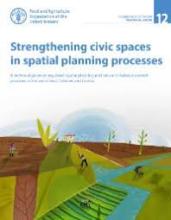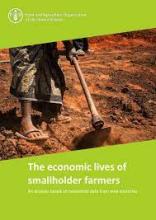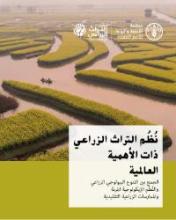/ library resources
Showing items 1 through 9 of 83.This technical guide provides strategies on how to strengthen, protect and promote legitimate tenure rights in spatial planning processes at the local, regional and national levels.
A review of needs at various scales for tools and processes that can help countries and stakeholders meet emerging challenges, address increasing degradation of and competition for resources, support the sustainable use and restoration of land and water resources, and ensure resilient ecosystems.
About two-thirds of the developing world’s 3 billion rural people live in about 475 million small farm households, working on land plots smaller than 2 hectares. 1 Many are poor and food insecure and have limited access to markets and services.
قامت منظمة الأغذية والزراعة بوضع " نُظُم التراث الزراعي ذات الأهمية العالمية" للمساعدة في صون نُظُم الزراعة التقليدية البارزة وإدارتها إدارة متكيفة.
The growing challenges of population growth, demands on limited resources by diverse actors, land degradation, biodiversity loss and climate change require the rational use of resources to sustain and enhance productivity and maintain resilient ecosystems.
These guidelines introduce and promote the essential elements of participatory rangeland management (PRM). Based upon the successful experiences of participatory forest management, the guidelines provide a process following three stages of investigation, negotiation and implementation.
Purpose of the guidelines The purpose of the present Guidelines is threefold: 1. to explain the basic principles of land use planning 2. indicate which land use planning activities could be carried out in Somaliland at different levels, and how 3.
Pagination
Land Library Search
Through our robust search engine, you can search for any item of the over 73,000 highly curated resources in the Land Library.
If you would like to find an overview of what is possible, feel free to peruse the Search Guide.








